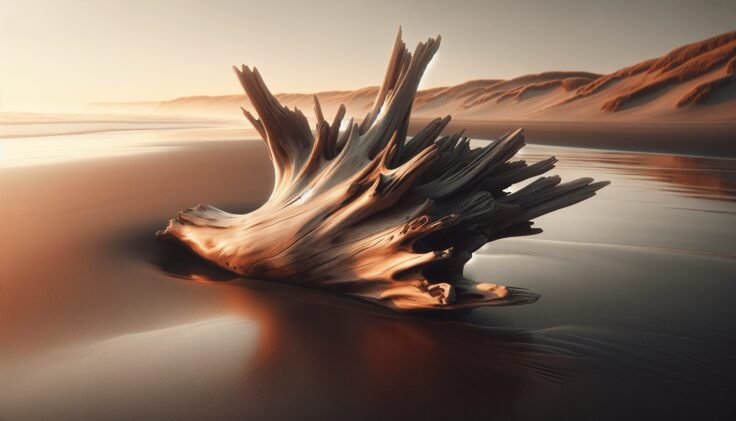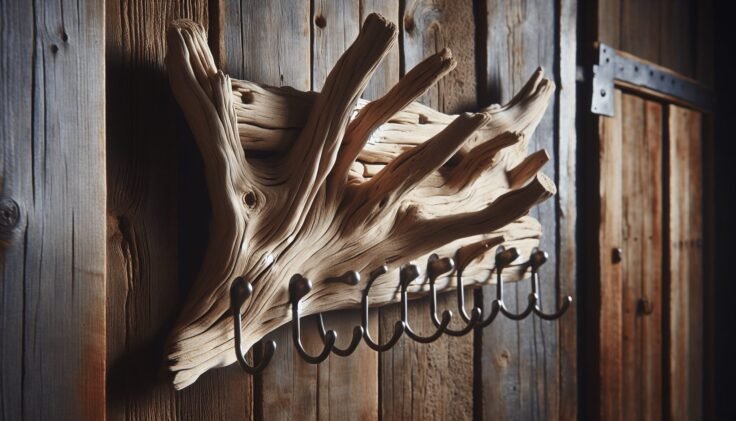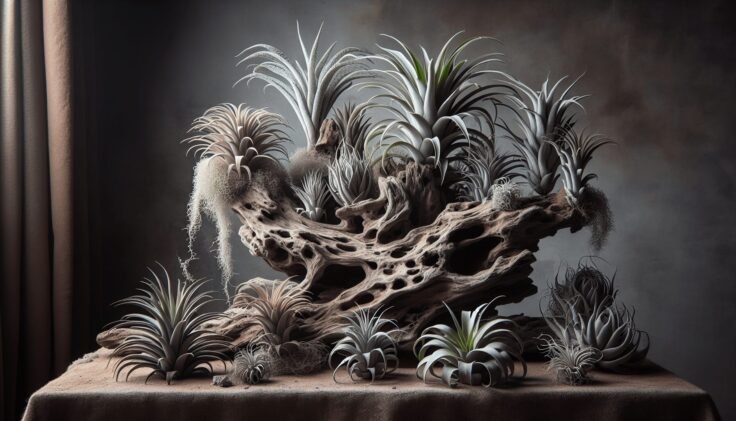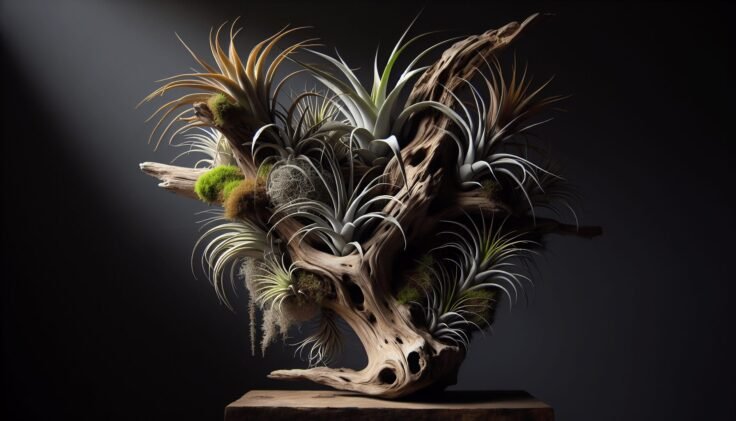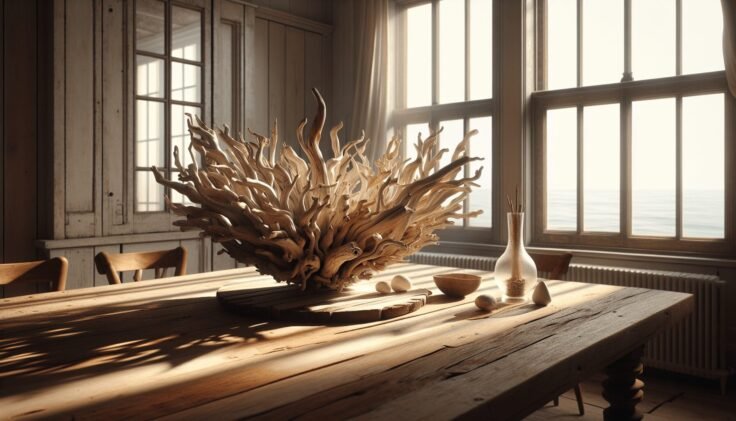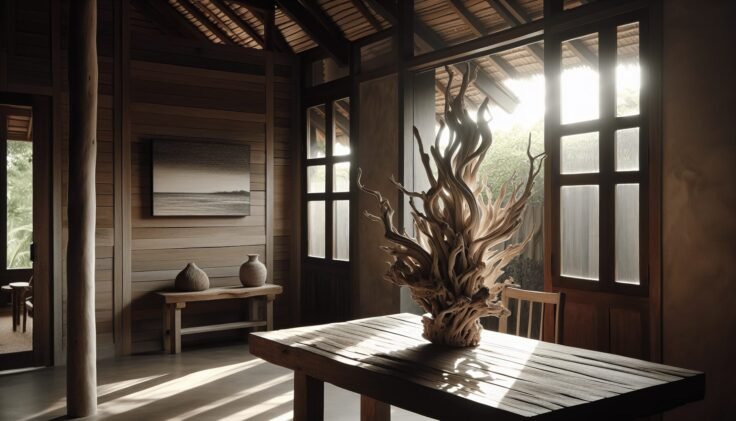Have you ever imagined exchanging vows surrounded by the serene beauty of nature, with the gentle sound of waves in the background and the rustic charm of driftwood creating a whimsical altar? A driftwood altar wedding is a unique way to blend the raw beauty of the natural world with the deeply personal and emotional experience of your wedding day. Let’s explore how you can create an unforgettable driftwood altar ceremony that reflects your love story beautifully.

What is a Driftwood Altar?
Driftwood is the weathered wood that washes ashore on beaches. Its natural, worn appearance gives it a rustic charm that feels both timeless and modern. A driftwood altar incorporates these pieces of driftwood into a ceremonial setting where you say “I do.” It’s perfect for couples who are passionate about sustainability or who simply love the beach’s aesthetic.
The Appeal of a Driftwood Altar Wedding
A driftwood altar is not just a decorative option; it’s a way to enhance your wedding’s connection to nature. It reflects themes of unity, stability, and life’s ongoing journey. The natural and unpredictable shapes of driftwood can symbolize the beautiful uniqueness of each couple’s relationship.
Environmental Considerations
One of the main benefits of choosing a driftwood altar is its sustainability. Using natural materials instead of mass-produced options helps minimize your carbon footprint, making your wedding both eco-friendly and beautiful. You can source driftwood from local beaches, ensuring that your altar has significance and connection to the location of your ceremony.
Planning a Driftwood Altar Wedding
Planning is essential to bring your dream of a driftwood altar wedding to life. Here’s a step-by-step guide to making your seaside ceremony a reality.
Selecting Your Location
Location is key for a driftwood altar wedding. Consider the type of beach you want, accessibility for guests, and whether you need a permit. Popular options include secluded beaches for intimate ceremonies or popular spots with facilities for larger gatherings.
Location Consideration Checklist:
| Factor | Considerations |
|---|---|
| Accessibility | Can guests easily reach the site? |
| Permits | Do you need permission to hold a ceremony? |
| Weather | Is the location suitable in your chosen wedding season? |
| Amenities | Are facilities like restrooms and parking available? |
| Scenery | Does the background enhance the overall look of your altar? |
Designing Your Driftwood Altar
Designing your altar involves working with the existing environment and your style preferences. You can go minimalist or ornate, depending on what appeals to you and complements the setting you’ve chosen.
Simple Techniques for Creating Your Altar
- Arch Configuration: Arrange driftwood pieces into a symmetrical archway, supported by the sand or with added anchors such as flower pots.
- Free-Standing Structure: Craft a stable frame using larger pieces of driftwood tied together with rope or wire, for a more organic look.
- Embellishments: Enhance your altar with natural decorations like seashells, flowers, and fabrics.
Gathering Materials
Collecting driftwood is a fun part of the planning process. You can make it a memorable outing by involving family and friends who want to contribute to your wedding day.
Tips for Collecting Driftwood
- Local Beaches: Visit local beaches to gather driftwood sustainably. Remember, some places have restrictions on removing natural elements, so check ahead.
- Driftwood Dealers: If collecting isn’t feasible, there are vendors who sell driftwood. This can be a practical alternative when time is limited.
- DIY or Hire a Designer: Decide if you want to personally design the altar or hire someone experienced in crafting elegant altar pieces.
Incorporating Your Personal Touch
Adding personal touches makes your wedding distinctly yours. Incorporate elements that reflect your journey as a couple or your shared interests.
- Photo Displays: Hang photos from the driftwood or place them in frames at the base.
- Family Heirlooms: Integrate heirlooms or personal items into the decor.
- Vows & Readings: Use driftwood placards to display your vows or sentimental readings for guests to see.
Making Your Driftwood Altar Wedding Memorable
Your driftwood altar wedding is about more than just visual appeal. It’s essential to think about the overall experience for you and your guests.
The Ceremony
The ceremony is the heart of your wedding day. Find an officiant who understands your vision and can incorporate the natural setting into their speech.
Ceremony Ideas to Consider
- Circle Rituals: Reflecting the cycle of life, consider a circular seating arrangement around the altar.
- Sand Ceremony: Highlight your beach setting with a sand pouring ceremony, symbolizing the joining of two lives.
- Music and Sounds: Utilize the natural acoustics of the beach by incorporating live music or simply enjoying the rhythm of the waves.
Attire and Accessories
Beach weddings invite a more relaxed attire. However, that doesn’t mean sacrificing style!
- Bridal Gown Tips: Choose lightweight fabrics like chiffon or lace that breathe well in potentially warm locations.
- Footwear: Consider sandals or go barefoot with an elegant foot accessory.
- Groom’s Attire: Linen suits or beach-appropriate semi-formal wear can keep the groom comfortable and stylish.
Catering and Refreshments
Catering for a beach wedding can be a delightful experience for your guests. Explore local delicacies or incorporate your favorite beach-themed foods.
Menu Inspirations
- Seafood Delights: Consider a menu rich in local seafood, from shrimp cocktails to fish tacos.
- Fresh Salads and Fruits: Light and refreshing options suit outdoor settings.
- Signature Cocktails: Design a signature cocktail that harmonizes with the sea breeze.
Capturing the Day
Documenting the beauty of your driftwood altar wedding is vital, both for personal memories and to share with loved ones unable to attend.
- Photography Tips: A photographer familiar with beach weddings can capture the unique lighting and scenery.
- Videography: Record the sound of waves and emotional exchanges with a videographer skilled in capturing outdoor ceremonies.
- Guest Involvement: Set up a hashtag so guests can share their perspectives of your special day.
Driftwood Reception Highlights
The reception is a chance to extend the driftwood theme into your celebration. Let’s see how you can incorporate driftwood creatively beyond the altar.
Decor and Centerpieces
Driftwood isn’t limited to the altar; it can grace your entire venue. From table arrangements to chic lighting, driftwood effortlessly complements any beach wedding.
Ideas for Driftwood in Reception Decor
- Table Centerpieces: Use driftwood pieces as bases for floral arrangements.
- Chandeliers: Craft a DIY driftwood chandelier with fairy lights for a magical atmosphere.
- Signage: Create elegant driftwood slab signs pointing guests to key locations like the bar, dance floor, or guestbook table.
Entertainment and Activities
Keep guests entertained with activities that make the most of your beach setting.
- Beachside Games: Volleyball, bocce ball, or a laid-back beach bonfire can be part of the celebration.
- Live Music: Local bands or acoustic duos provide the perfect backdrop for a beach reception.
Saying Farewell
As your day concludes, think about a unique send-off that resonates with the beach theme.
Send-Off Ideas
- Bonfire: End the night with a cozy bonfire, offering guests a warm goodbye.
- Shell Toss: Encourage guests to make a wish and toss a shell into the sea.
- Sparklers: Light up the night with sparklers as you make your way down a sandy aisle.

Conclusion
A driftwood altar wedding is a beautiful blend of natural elements and personal creativity, promising a day filled with love, laughter, and breathtaking views. By thoughtfully integrating driftwood throughout your celebration, from the ceremony to the reception, you create an unforgettable experience for you and your guests. Let the waves wash over you as you start your next chapter under a handcrafted altar that embodies your shared dreams and the sturdy foundation of your love.


